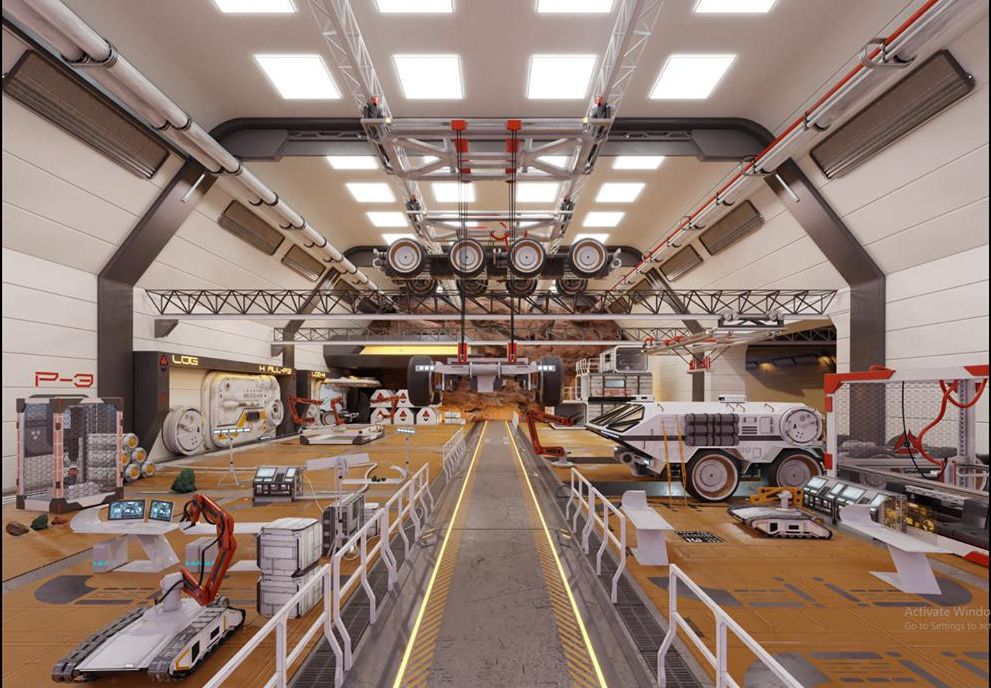YOUR BROWSER IS OUT-OF-DATE.
We have detected that you are using an outdated browser. Our service may not work properly for you. We recommend upgrading or switching to another browser.
Date: 28.10.2019 Category: general news, student activity
Our students reach high places in the international Mars Colony Prize competition for the design of a Red Planet housing estate. The authors of the concept named "Twardowsky" took second place, and the "Ideacity" settlement was awarded fifth place. One hundred projects from all over the world entered the competition.
 The competition was organised as part of the annual international conference of The Mars Society association, attracting scientists and entrepreneurs involved in space research and exploration. The final stage saw ten projects developed by Russian, Swedish, American, French, and Swiss teams as well as two entries from teams from Wrocław University of Science and Technology. It was not a student competition - the proposals were submitted by interested parties from all over the world, including engineers working in space industry companies.
The competition was organised as part of the annual international conference of The Mars Society association, attracting scientists and entrepreneurs involved in space research and exploration. The final stage saw ten projects developed by Russian, Swedish, American, French, and Swiss teams as well as two entries from teams from Wrocław University of Science and Technology. It was not a student competition - the proposals were submitted by interested parties from all over the world, including engineers working in space industry companies.
"Twardowsky" was developed by MSc and PhD students of WUST that belong to the Space is More group and the Off-Road Vehicle Scientific Circle of Vehicles and Mobile Robots (known primarily as the Scorpio Project) with the help of several members of the Scientific Circle MOS and the LabDigiFab initiative. The "Ideacity" concept was developed by students from the Innspace group.
Second place in the competition, which meant five thousand dollars in prize money, was awarded to the "Twardowsky" project. Among other things, the concept comprises the establishment of a colony in the Jezero crater, which is the planned landing spot for the Mars 2020 mission of the American agency NASA. The population of the estate would be divided into groups of two hundred people each. They would stay in large open spaces in a terrace-based structure with access to greenery, and their flats would be located next to restaurants, cafés, shops, and medical facilities. Food production in "Twardowski" would be based on aquaponics, i.e. a combination of fish farming in large aquariums with the cultivation of plants in water. The ideas for balancing expenses and income of the colony would include tourist offers for visitors from Earth and the production of luxury goods such as Martian vodka.
Fifth place in the competition was awarded to the Innspace team, the authors of the "Ideacity" concept. The project uses the Renaissance concept of the perfect city, By proposing short distances (the city is in a hexagonal shape with the side length of 400 m), the centre being the main place of the colony, and a network of both underground tunnels that allow people to get around the city without being exposed to external conditions and roads on the surface that allow cargo vehicles traffic. The students designed buildings for everyday use close to the city centre and placed industrial buildings on the outskirts of the city. Most of the buildings are underground, which helps to protect the residents from radiation.
Both student groups as well as all semi-finalists of the competition, i.e. the 25 teams selected by the Mars Colony Prize jury in May, will also publish articles on their solutions in the book to be entitled "Mars Colonies: Plans for Settling the Red Planet
The "Star City" project, developed by the team from Massachusetts Institute of Technology, was deemed best in the competition. Third place was taken by the concept named “CrowdSpace” developed by the Russian team.
Our site uses cookies. By continuing to browse the site you agree to our use of cookies in accordance with current browser settings. You can change at any time.